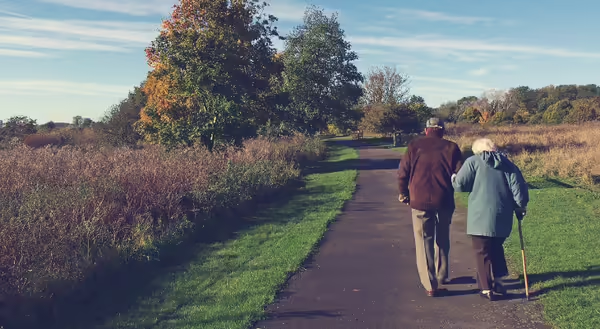
Is an ‘awe walk’ the best medicine?
Take a moment to think about what makes you go, ‘awe’. It may be the wind in the trees or a really good song. For me recently, I was walking out of a restaurant picking up lunch for myself and a colleague. My hands were very full and I was anticipating having to get to my car and put everything on the ground to unlock my car door. Someone who parked next to me noticed I was struggling to hold everything and not drop it. He stopped what he was doing and asked if he could open my car door to help. A flood of emotions came over me because this human who had no incentive to help me went out of his way to help me complete my own task. This very simple random act of kindness had me flooded with awe. Let’s try to describe how awe makes us feel.
That may be a hard feeling to describe. Dacher Keltner, a professor at U.C. Berkley, has done quite a bit of research on the feeling and benefits of experiencing awe in our lives. Keltner defines this very transformative feeling as, “the feeling of being in the presence of something vast that transcends your understanding of the world” (Keltner, 2016). It can be described as something that gives you wonder, goosebumps, or makes your chest feel broader. Awe doesn’t have to be found in only big mountains or purchasing tickets to a music event. Keltner says that awe can surround us in our everyday lives. Like the very old oak tree in your front yard, or that cute dog you saw earlier today.
Benefits of experiencing awe
When we feel awe, it is suggested that we are improving our health. Keltner says that awe has a positive impact on our immune system, specifically our cytokine system. This is where our body fights off sickness and helps heal wounds. When the cytokines (chemical messengers) are activated, it brings out the inflammatory response that positively impacts our immune system. Awe can also help us feel grounded, focused, and improve our overall well-being. When we focus on the simple joys around us, we can become more in tune with ourselves.
How can I experience more awe in my life?
One of the activities that Keltner focuses on is going on an awe walk. Here are some simple steps to get started on your own awe walk.
- Start by finding a path to walk on that is best for you. Maybe it’s going to your local forest preserve or taking a walk on your paved sidewalk around the neighborhood. Dedicate time to this walk that works best for you and your physical ability. Whether that be up and down the sidewalk or a whole mile.
- Limit your distractions and focus your attention to what is happening in the moment.
- As you are walking try to do some mindful breathing, paying special attention to how the air feels going through the parts of your body.
- After the mindful breathing, focus on what is around you. It could be the leaves falling around you or the sun falling slowly into the sunset.
- Do another round of mindful breathing as you are walking.
- Focus your attention on something else that is awe inspiring. Is it the group of trees you see or a swing from a playset that is being pushed by the wind.
- Ask yourself what is new, unknown, or unexplored around you?
If you live somewhere where your climate is starting to turn into the colder seasons, it may be harder to get outside for some. You can do an awe walk inside! Go to your local library, museum, gallery, or even simply a good hallway with some art. Or if you simply need to stay in your own space, do the walk with Keltner himself! He has filmed a 360 degree guided virtual awe walk through the Muir Woods National Monument in California that you can participate in.
These steps were adapted from Greater Good Science Center’s Awe Outing.
Learn more about the benefits of an awe walk:
- Greater Good Science Center, Awe Outing: https://ggia.berkeley.edu/practice/awe_walk
- HuffPost, Am I Doing It Wrong Podcast: https://shows.acast.com/64ff3d311c482e0011553058/6604a3d9fdb454001691dd27
References:
Greater Good Science Center. (2024). Awe Outing. Greater Good in Action. https://ggia.berkeley.edu/practice/awe_walk
Keltner, D. (2016, May 10). Why Do We Feel Awe?. Greater Good Science Center. https://greatergood.berkeley.edu/article/item/why_do_we_feel_awe

Emily Harmon is responsible for family life programming in the counties of Champaign, Ford, Iroquois, Vermilion, and other parts of Illinois as needed. Emily's areas of interest are working with older adults to provide healthy living and healthy aging programming. She is passionate about providing resources to empower individuals to make decisions for themselves to improve their overall well-being. Another area of interest is working with Money Mentor volunteers.